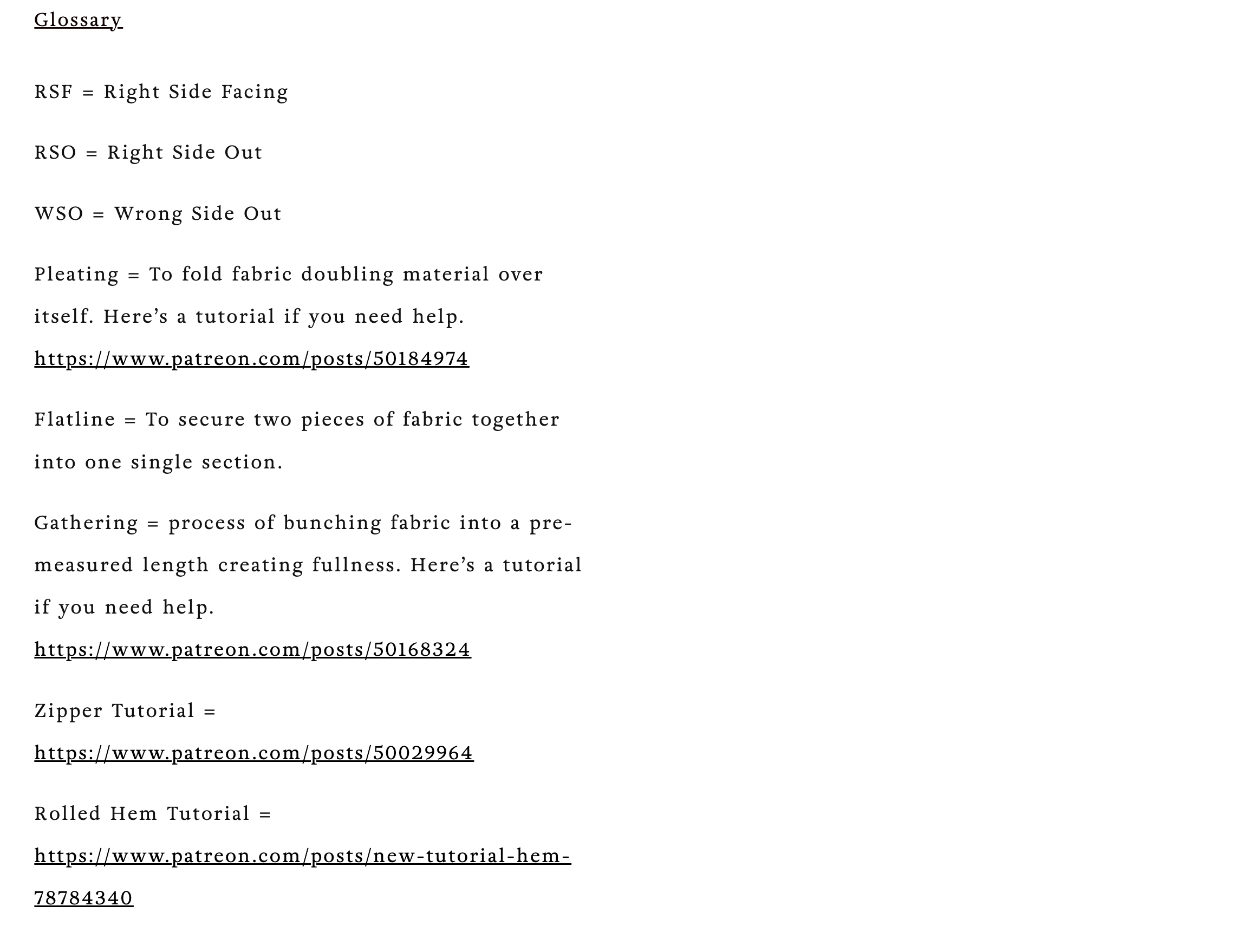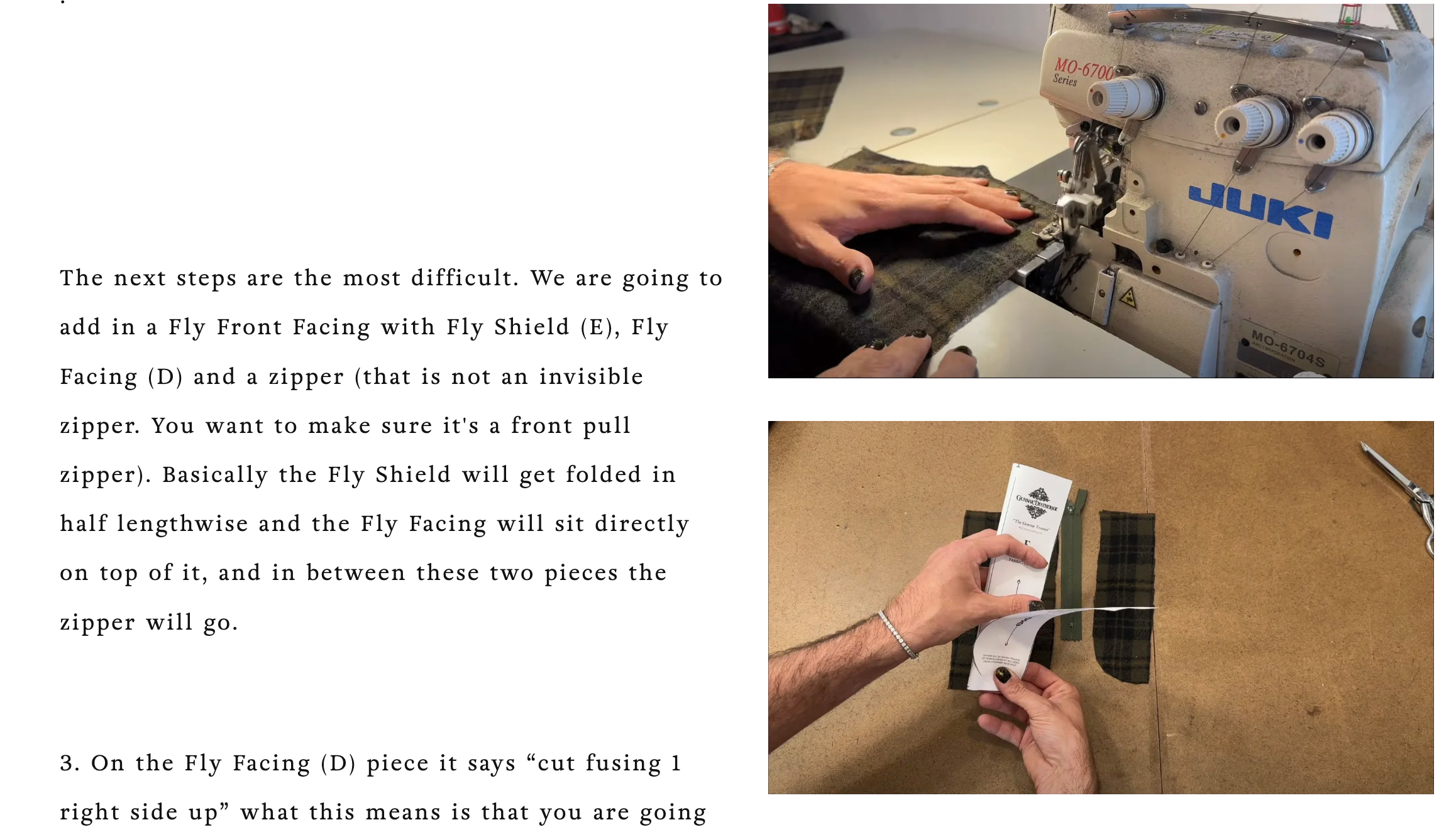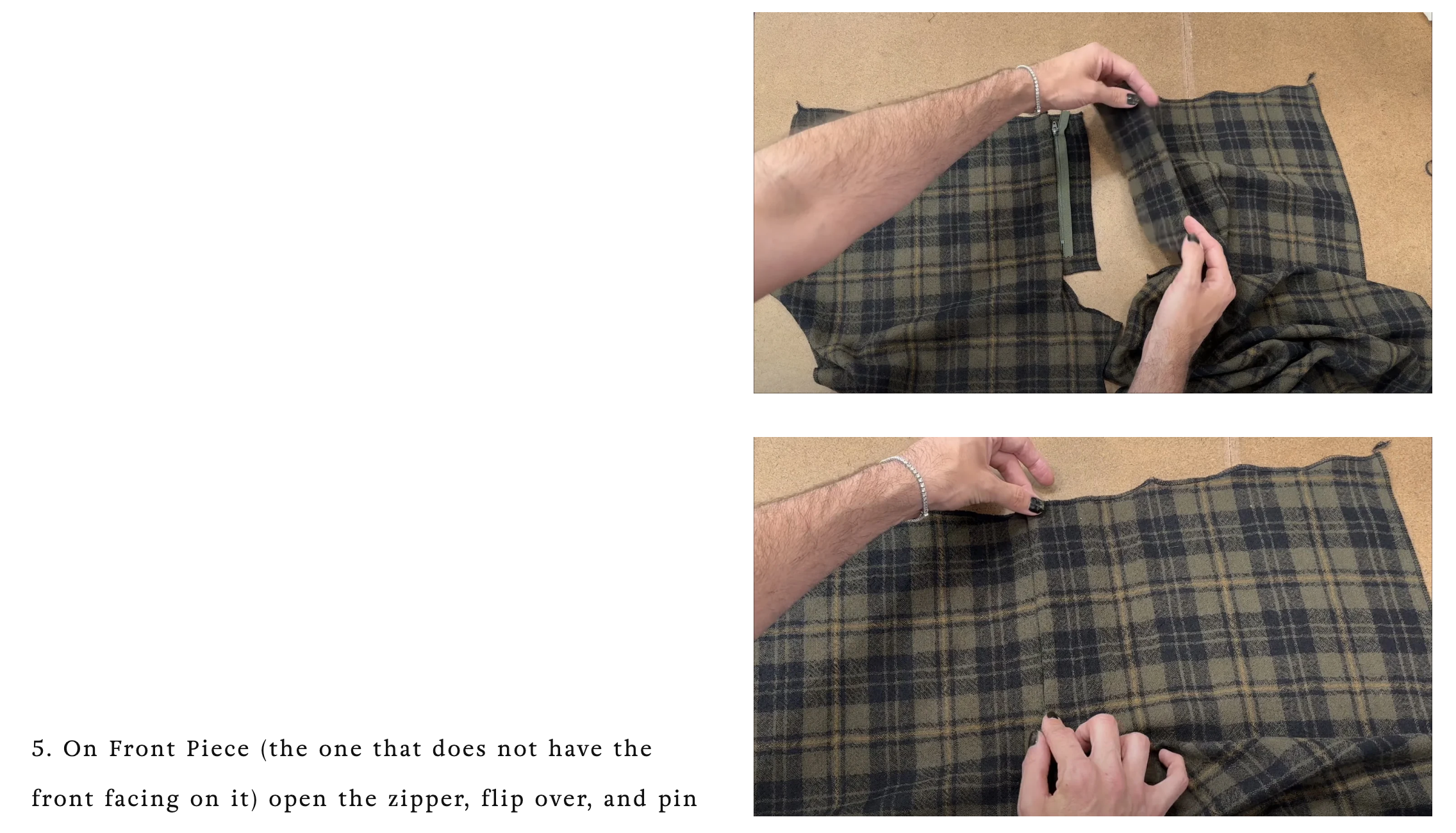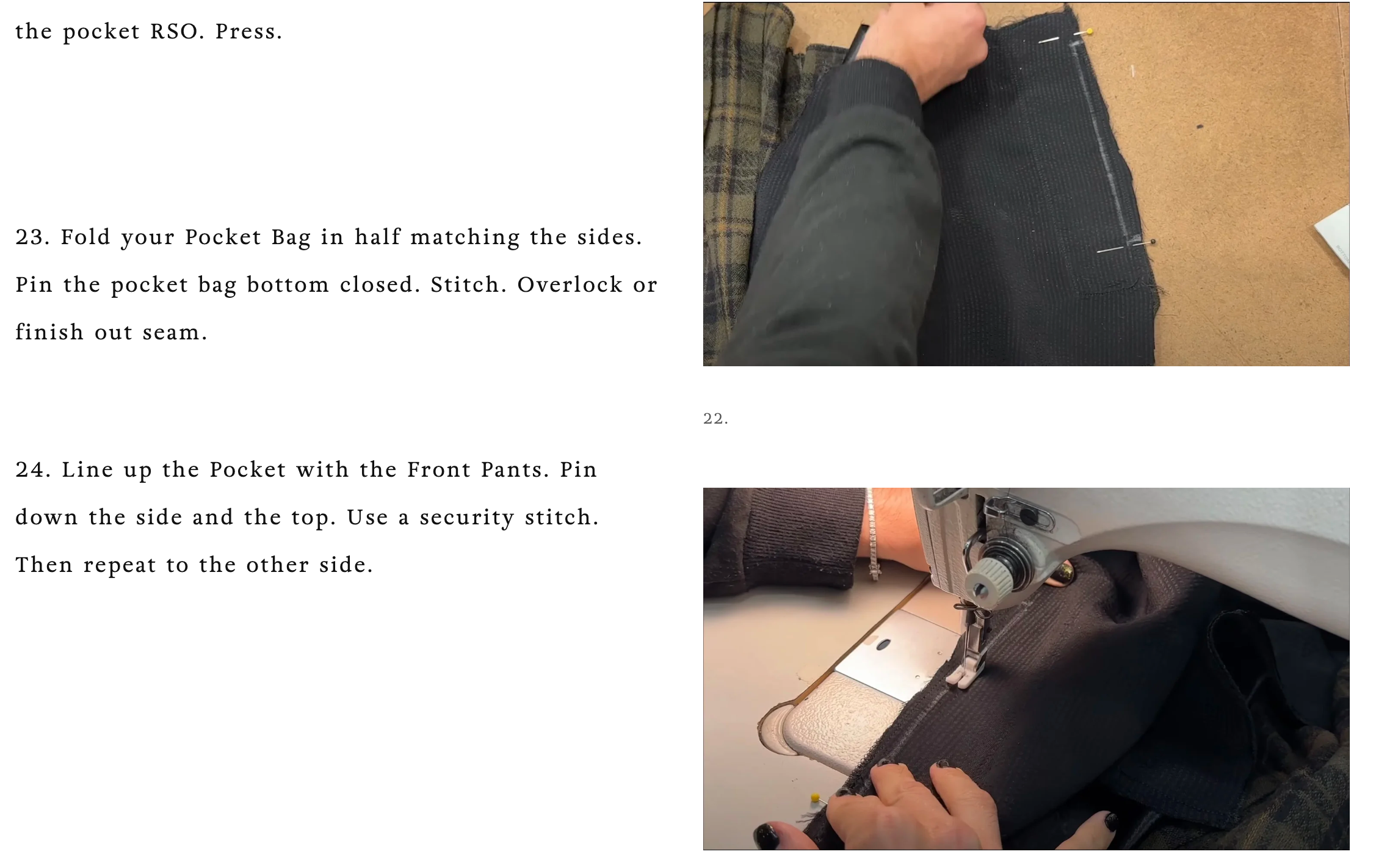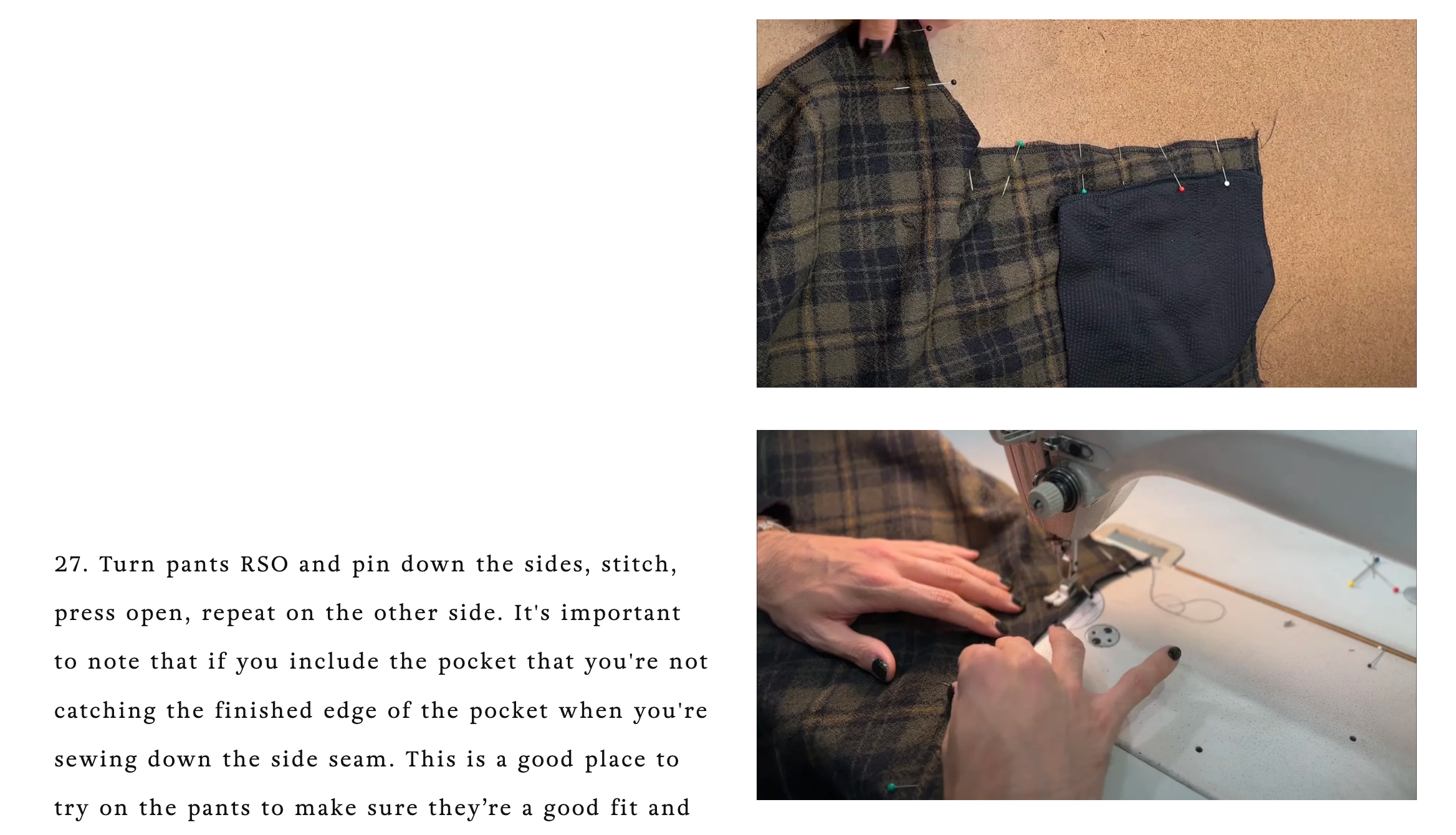The Gunnar Trouser Sewing Pattern Guide

Hello and welcome to The Gunnar Trouser Sewing Guide!
I tried to make this tutorial as easy as I could. I over explain in some areas, but we tackle everything from the Fly Front and Fly Shield on a pair of jeans all the way to Welt Pockets in backpacker area of a trouser. I wanted to make sure you felt confident in the process, and give you the skills to do this on other projects.
Please send me photos of your creations. I LOVE SEEING THEM! Tag me on instagram, send me an email, or message me on Patreon. Whatever works for you.
The instructions are below!

